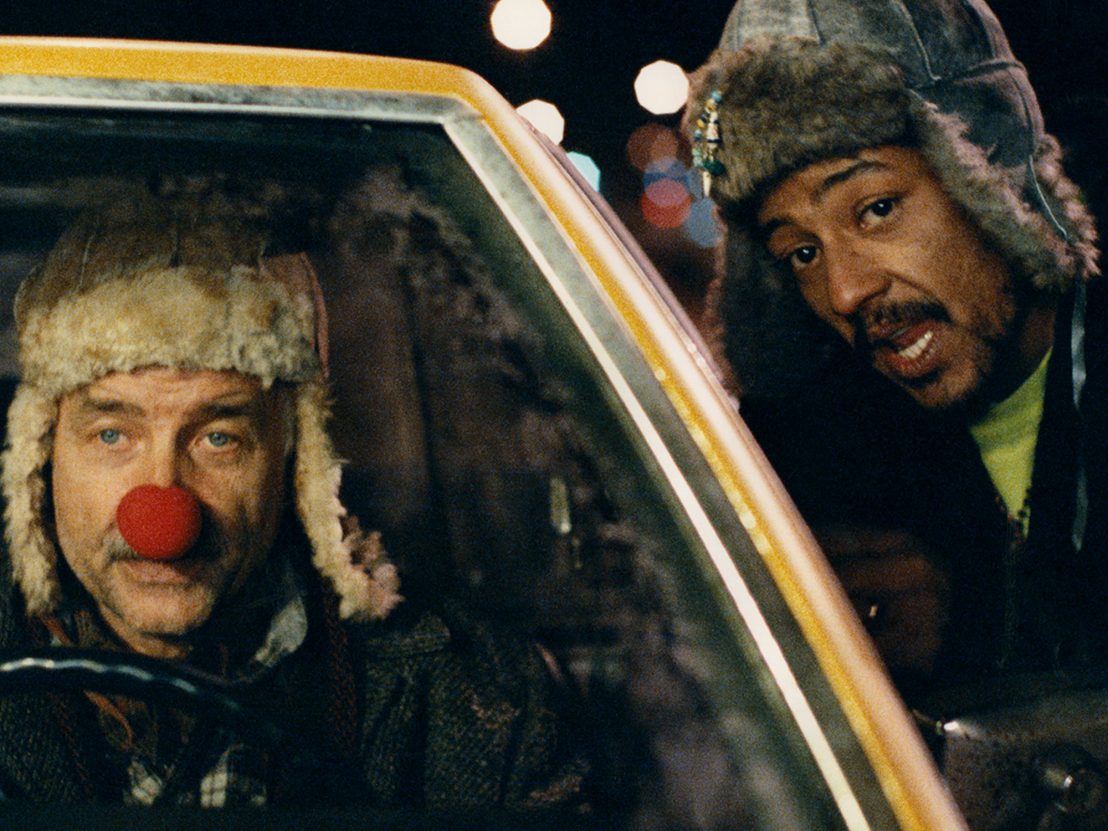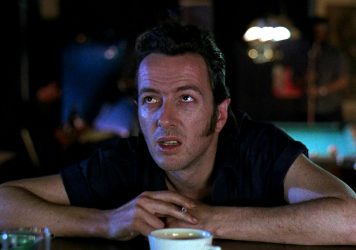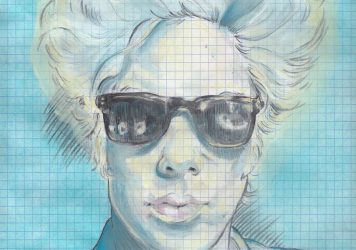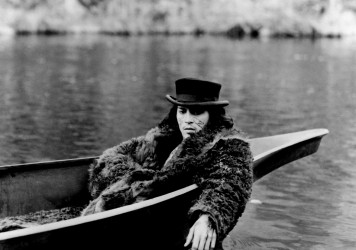
My Dad always wore the same thing to pick me up on a Saturday. A wide black leather jacket, buttoned past his chin, wire-framed rectangular glasses, a scarf tied around the lower half of his face, and a woolly hat around the top. He had a serious face, a heavy German accent, and when we went to McDonald’s he would point at the meal he wanted rather than ordering it. For Newport, South Wales, in the mid-2000s, everything he did felt out of place.
When I first saw Jim Jarmusch’s Night on Earth, my Dad could have been on the screen. The 1991 anthology film follows a series of loners on nocturnal taxi rides. In New York, we meet YoYo (Giancarlo Esposito), a Brooklyn native who after trying unsuccessfully to hail a cab – dozens of vacant taxis drive past him; a Black man – finally gets picked up by Helmut (Armin Mueller-Stahl), an East German immigrant who can’t drive. Helmut says he will take him to “Brookland”, although “better [YoYo] show [him] the way.”
They get off to a stalled start in every sense – YoYo has to take the wheel to get them more than a few meters down the road. In the taxi’s interior, I instantly recognised their stilted conversation. Just like my Dad’s exchanges with so many McDonald’s staff, Helmut, an ex-circus clown from Dresden, grapples with phrases like “cool” and “good to go”. YoYo, who knows the rules, geography and language of New York inside out, looks on with disbelief, himself mistaking Helmut’s stern mutterings for irritation.
But then Helmut points at YoYo’s head and says, “We have the same hat,” and they do. They are wearing nearly the same ushanka hat with ear flaps. Helmut’s is beige suede with worn, white wool around the forehead; YoYo’s is grey, lined with soft fur and clearly more expensive. “No, mine’s different,” YoYo protests, “Mine’s the newest-latest, mine’s fresh.” But it’s too late; the pair are matching.
Through this serendipitous, surface similarity, Jarmusch reveals stronger cultural connections between the two. Dressed in matching headgear, they mirror each other more than clash as they launch into a double act in the front seats. They share a strange sense of humour – both think each other’s name is ridiculous, Helmut because a yoyo is a “toy for kids”, YoYo because he says the name “Helmet” is like “calling your kid Lampshade”.
Helmut mimics YoYo by holding on to an imaginary wheel, admiring his command over the road. Both characters are operating the taxi, and also not. Neither can take the driver’s seat in this city – Helmut because he is an immigrant who doesn’t know how, YoYo because he is treated as “invisible” in Manhattan.
As in so many of his films, Jarmusch sees language barriers and cultural dissonance as fertile cinematic ground. Night on Earth revels in the social misfires I dreaded as a child. It also showed me their value. By the end of the cab ride, we see both characters truthfully for how they behave in tandem. We understand Helmut and his naivety, making his lone onward journey into an unfamiliar New York ever more poignant.
When I was a kid, my Dad was passing acquaintances with one of the servers at McDonald’s. They spoke briefly every time we walked in; both thought the other was bizarre, but I remember them often laughing. Unlike Helmut and YoYo’s rapport, I didn’t find their conversations a joy to watch. But the truth Jarmusch unearths in Night on Earth was still there. Their interactions allowed me to see my Dad clearly – his rare humour, and his isolation living in a city of unknown rules.
Published 12 Dec 2021

Jim Jarmusch’s 1989 film is a melodic ode to an America of drifters, tourists and lonesome wanderers.

Akron’s finest chats riffing on George A Romero and fearing for our future in The Dead Don’t Die.

Director Jim Jarmusch found the perfect creative kindred spirit for his surreal monochrome western.